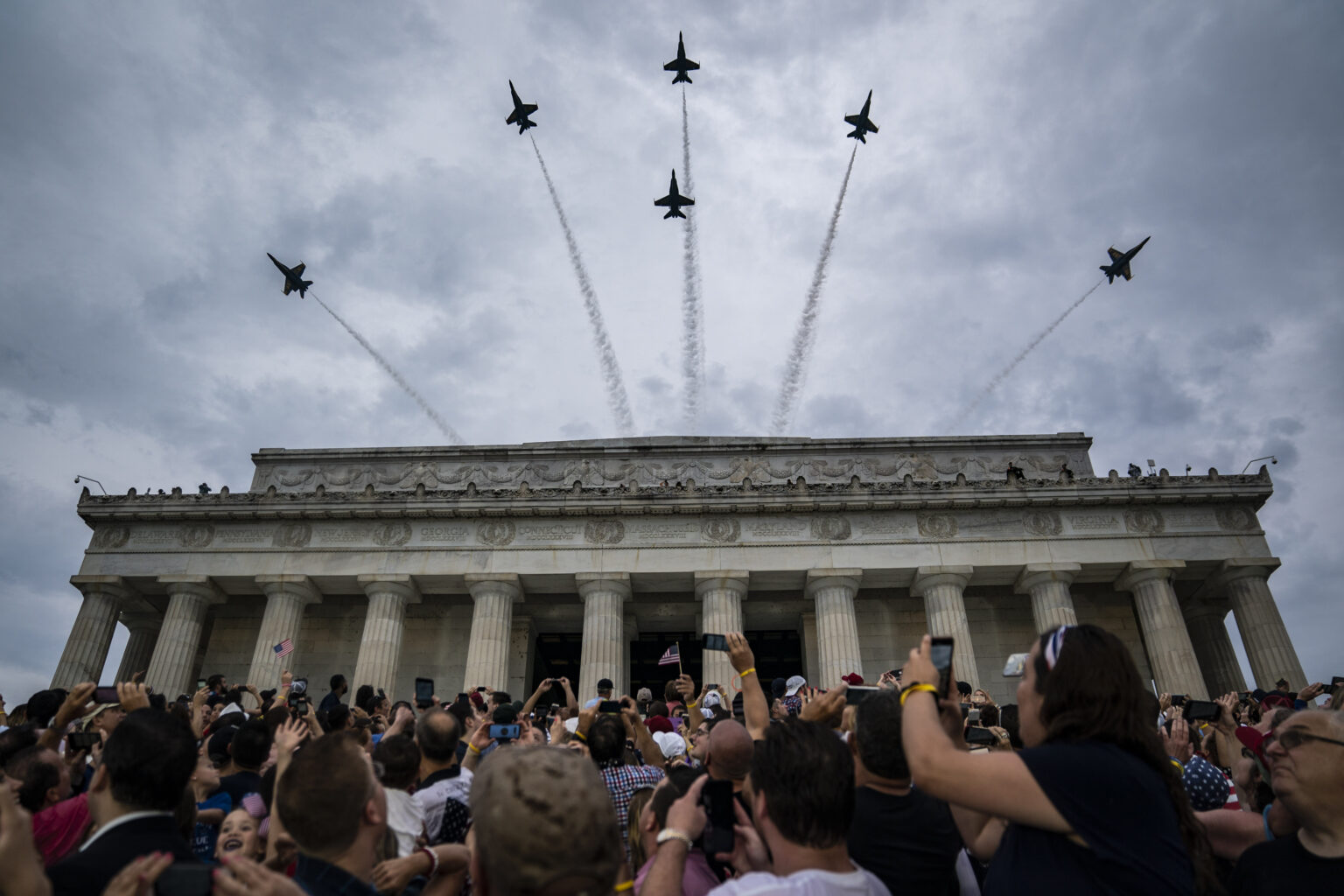Revamping the National Mall: The Evolution of Military Celebrations in the United States
Historical Roots and Traditional Celebrations
For decades, the United States has marked its military milestones with modest festivities, often centered around commemorative events at military museums or local parades. Typically, these gatherings involve displays of equipment, performances by military bands, and community participation, serving as a tribute to the armed forces’ history and service. For instance, the Army’s 250th anniversary in 2025 was initially envisioned as a straightforward celebration at Fort Belvoir, featuring static displays, parachute demonstrations, and musical performances-an accessible event designed to foster public engagement.
The Shift Toward Spectacle: From Modest to Magnificent
However, the approach to celebrating military history has undergone a dramatic transformation, especially in recent years. The desire to showcase American military strength on a grand scale has gained momentum, driven by political ambitions and a desire to project power both domestically and internationally. This shift was exemplified by President Donald Trump’s admiration for France’s Bastille Day parade, which he publicly praised as “one of the greatest parades I’ve ever seen,” and expressed a desire to replicate such displays in the U.S.
In 2018, this aspiration moved from mere rhetoric to concrete planning. The Pentagon began exploring the logistics of a large-scale military parade, considering the costs, security, and public perception. Historically, U.S. presidents have occasionally organized military parades-most notably, President George H.W. Bush’s 1991 victory parade after the Gulf War-yet these events remained relatively rare and subdued compared to the elaborate spectacles seen in other nations.
Political and Cultural Motivations Behind the Parade
The push for a national military celebration intensified under Trump, who viewed such displays as a means to bolster national pride and demonstrate military prowess. The timing was also strategic: the parade was planned to coincide with Trump’s 79th birthday on June 14, 2024, symbolizing a personal milestone intertwined with national celebration. The administration’s efforts were further facilitated by a Pentagon now more aligned with the president’s vision, with loyalists in key positions and fewer restrictions on public displays of military strength.
This enthusiasm was not solely about patriotism; it also reflected a broader political context. The administration’s early moves to dismiss senior military leaders, including the Chairman of the Joint Chiefs of Staff, suggested a desire to reshape the military’s public image and assert executive authority. The parade, therefore, became a symbol of both national pride and political assertion.
From Planning to Reality: The Making of a Grand Spectacle
Initial plans for the event were modest, involving a few hundred participants and basic arrangements. Yet, as the Trump administration’s ambitions grew, so did the scope of the celebration. The event was expanded to include 28 Abrams tanks, Stryker combat vehicles, Bradley Fighting Vehicles, and thousands of soldiers from across the country. The projected cost soared to approximately $45 million, raising concerns about budget priorities amid ongoing military and domestic program cuts.
Preparations for the parade involved significant logistical challenges: road closures along Constitution Avenue, temporary halts at Reagan National Airport, and waterway restrictions on the Potomac River. The event was slated to feature a parade route stretching from 15th to 23rd Streets, with stages and viewing areas under construction in the days leading up to the event.
Public Engagement and Community Outreach
Efforts to generate public interest included extensive outreach through social media campaigns, partnerships with local sports teams, and recruitment advertisements inviting residents to witness the spectacle. The city’s tourism authority provided detailed guidance on logistics, emphasizing that the celebration was focused on the Army’s 250 years of service rather than political messaging. Nonetheless, the event’s timing and scale inevitably drew attention to the political symbolism surrounding the military display.
Controversies and Political Sensitivities
Despite official statements distancing the parade from political motives, questions persisted about the event’s true intent. Some military officials expressed reservations, citing concerns about the event resembling displays of authoritarian power seen in other countries. Notably, Defense Secretary Jim Mattis publicly voiced opposition, fearing the parade could undermine the military’s image and strain resources. His resignation in late 2018 marked a turning point, after which the parade plans gained momentum under a more supportive administration.
A New Era of Military Celebrations
The parade’s scale continued to expand, with plans to include 6,700 troops, a variety of military vehicles, and aerial demonstrations by the Army’s Golden Knights parachute team. The event’s estimated cost approached $45 million, with local officials worried about infrastructure damage and logistical disruptions. The parade was set to be a centerpiece of the broader 250th anniversary celebrations, symbolizing a renewed emphasis on military strength and national pride.
Looking Ahead: The Day of the Event
As the event approaches, organizers are employing multiple channels to attract spectators, including social media, community partnerships, and targeted advertising. The city has prepared for significant disruptions, including street closures, flight delays, and security measures. While some residents and officials remain cautious about the event’s political implications, the parade is poised to be one of the most ambitious displays of military might in recent American history.
Conclusion: A Reflection of Power and Patriotism
The evolution from modest military commemorations to a grand national spectacle underscores changing attitudes toward military pride and political symbolism in the United States. Whether viewed as a celebration of history or a demonstration of power, the upcoming parade will undoubtedly leave a lasting impression on the nation’s collective memory, highlighting the complex relationship between military strength, political leadership, and public perception in contemporary America.

